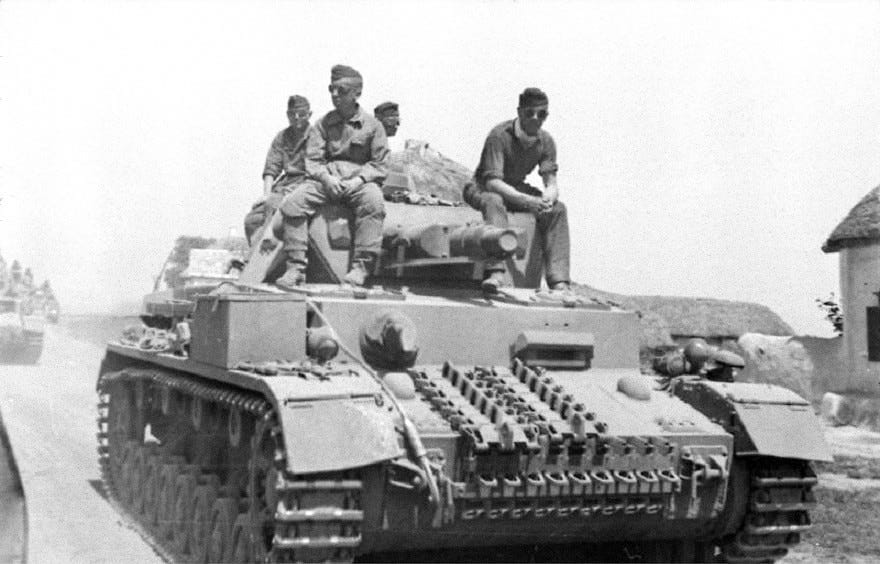Unveiling the 10th Panzer Division: A Deep Dive into Rommel’s “Other” Afrika Korps Force
The 10th Panzer Division, often overshadowed by its more famous counterparts in the Afrika Korps, played a crucial, albeit sometimes controversial, role in the North African campaign during World War II. This article delves into the history of this division, from its formation and early engagements to its deployment in North Africa and ultimate fate.
From Eastern Front to North African Sands: The 10th Panzer Division’s Grueling WWII Journey
Formed in the heart of Europe in April 1939, the 10th Panzer Division first tasted combat in the invasion of Poland, followed by a pivotal role in the Battle of France. These early campaigns provided the division with invaluable experience in blitzkrieg warfare, honing their skills in rapid maneuver and overwhelming force. However, it was the unforgiving deserts of North Africa that would truly test their mettle.
In February 1942, the 10th Panzer Division was dispatched to North Africa, joining Erwin Rommel’s legendary Panzer Army Africa. There, amidst the searing heat and blinding sandstorms, they would face a new kind of warfare, one demanding adaptability, resilience, and tactical ingenuity.
Key Engagements in the North African Theater
- Battle of Kasserine Pass (February 1943): The 10th Panzer Division played a significant role in this decisive Axis victory, showcasing its offensive capabilities against inexperienced American forces. This battle highlighted the division’s ability to exploit enemy weaknesses and achieve breakthroughs.
- Djedeida (February-March 1943): The division was heavily engaged in this sector, attempting to stem the Allied advance. The engagements around Djedeida demonstrated their defensive capabilities as they fought tenaciously to hold their ground.
- Final Defensive Actions (March-May 1943): As the tide turned against the Axis forces, the 10th Panzer Division participated in a series of delaying actions, buying time for their comrades to retreat. These actions, though ultimately futile in preventing the inevitable Axis defeat, underscored their discipline and determination even in the face of overwhelming odds.
The 10th Panzer Division in Poland: A Prelude to Desert Warfare
While the 10th Panzer Division’s North African campaign might be more widely recognized, their earlier experiences in the invasion of Poland (September 1939) were equally formative. Initially envisioned as a reserve force, the division’s mere presence had a psychological impact, contributing to the rapid collapse of Polish defenses. This campaign, though brief, provided valuable lessons in mobile warfare and combined arms operations. The division’s performance in Poland served as a proving ground, highlighting the potential of armored formations in modern warfare.
A Legacy Marred by Controversy
Despite their battlefield successes, the legacy of the 10th Panzer Division, like many German units of World War II, is tarnished by its involvement in war crimes. The massacre of French-Senegalese soldiers at Bir Hakeim stands as a stark reminder of the brutal reality of war and the ethical complexities that can accompany military success.
The End of the Road: Surrender in North Africa
By May 1943, facing overwhelming Allied forces, dwindling supplies, and relentless air attacks, the 10th Panzer Division, along with the remnants of the Afrika Korps, surrendered in Tunisia. Their North African campaign, marked by both impressive victories and disheartening defeats, had come to an end.
Does the Panzer Division Still Exist?
The Panzer divisions, including the 10th, ceased to exist after World War II as part of Germany’s demilitarization. However, their legacy lives on. Their innovative use of tanks, combined arms tactics, and emphasis on speed and mobility continue to influence modern military doctrine.
Modern Germany’s military, the Bundeswehr, bears little resemblance to its World War II predecessor. Focused on defense and international cooperation, the Bundeswehr reflects a profound shift in Germany’s strategic outlook since the dark days of the Nazi regime.
Conclusion: A Complicated Legacy
The 10th Panzer Division’s story is a complex one, encompassing both impressive military achievements and deeply troubling actions. Their experiences in North Africa offer valuable insights into the challenges of desert warfare, the importance of logistics, and the enduring allure of maneuver warfare. However, their story also serves as a reminder of the human cost of conflict and the moral dilemmas inherent in warfare.
The ww1 german gas mask was first used by the German army in 1915. The intercontinental ballistic missile gambit is a controversial strategy in chess.















